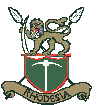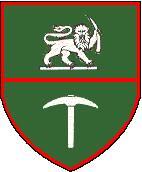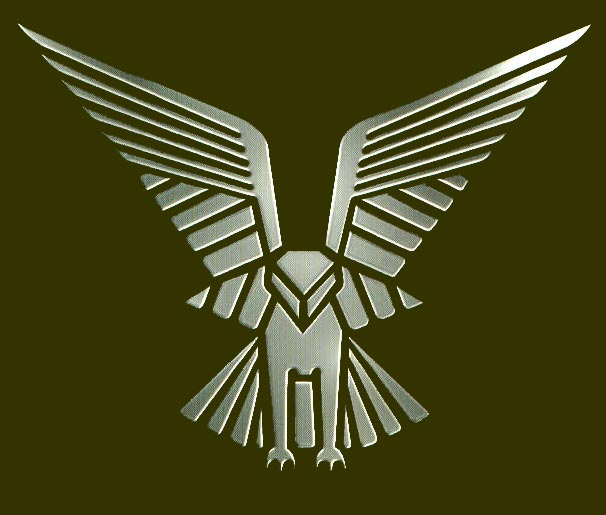|

| |
General Elements
SECTION 1: THE ENEMY
- General. The insurgent threat to southern Africa
is a real and complex one, aimed at removing the white man's influence on
the sub-continent at all costs. Insurgents are trained, indoctrinated and
equipped mainly by communist countries. This manual is only concerned with
one aspect of this threat, namely the rural terrorists.
- Characteristics. The enemy is usually careless of
death. He has no mental doubts, is little troubled by humanitarian
sentiments, and is not moved by slaughter and mutilation., His upbringing
and standard of living make him well fitted to hardships. He requires little
sustenance and comfort, and can look after himself. His standard of
bushcraft is usually of a high order and he has a keen practiced eye for the
country and the ability to move across it at speed on foot. He is usually
physically fit, being able to cover long distances rapidly carrying a heavy
load. He is capable of being trained to use modern and complicated weapons
to good effect. He is taught to read a map, use radios and voice procedure
and effectively employ simple but deadly booby traps.
- Tactics. Enemy tactics are based on the following:
- Flexible, imaginative and unorthodox operations, relying above all on
surprise.
- Offensive action, even when temporarily on the defensive.
- A high degree of foot mobility.
- The ability to exploit the advantages of night operations.
- Detailed preparations before any attack; local superior strength and favorable
conditions being a prerequisite.
- Frequent use of all types of ambush.
- Extensive use of booby traps. improvised mines, obstacles and field
works using locally available material.
- Evading decisive engagements.
- Arms. The terrorists are normally well armed with
modern automatic or semiautomatic rifles, submachine guns and machine guns.
Hand grenades are in abundance. More sophisticated arms are in use on an
ever increasing scale, e.g., grenade launchers, mortars, guns and even
anti-aircraft machine guns. The use of mines is a favorite terrorist tactic.
Most arms originate from communist countries, but the terrorists are also
trained to use the military forces I own weapons against them, be they
stolen or captured in combat. When forced to, he can revert to primitive
weapons such as muzzle loaders, spears and bows and arrows.
- Equipment. The terrorists are well equipped with
modern items such as radio sets, plastic explosives, map reading aids,
first-aid kits and rations. However, when forced to, his training allows him
to fall back on primitive means in order to improvise and survive.
- Vulnerability of the terrorist. The most important
factors are the need for the support of the local population and external
assistance. These should be exploited by all concerned when countering the
terrorist threat. if he is cut off from outside assistance, and finds no
comfort or aid from the local population, his war will be over. It is also
important to remember that the terrorist is normally disciplined by
indoctrination to accept an ideology foreign to his own tribal background.
Furthermore, the group is normally held together more by strong leadership
than by common cause. Physical or psychological action aimed at these
sources could easily undermine his discipline, and break his morale.
SECTION 2: TERRAIN AND CLIMATE
- Theatres of operation in southern Africa are characterized by terrain and
climatic conditions that adversely affect the deployment of modern armies.
- Geographically, the terrain ranges from semi-desert to mountainous areas,
and many areas are thickly vegetated. This causes the following
restrictions:
- Mobility.
- Vehicle movement is normally restricted to an underdeveloped road
network, paths and tracks.
- Rivers in flood hamper mobility.
- Observation of the enemy and of support weapons fire is difficult, if
not impossible, and may require increased air effort.
- Radio transmission and reception ranges are greatly reduced.
- Navigation is difficult and calls for improvised methods.
- Employment of arms is often restricted to infantry on foot.
- Liaison and control are difficult.
- Southern Africa is known for its extreme climatic conditions and this
calls for:
- A high degree of physical fitness and a period of acclimatization for
all troops.
- Proper medical cover against tropical diseases and a high standard of
personal hygiene.
- Protective measures and proper maintenance of all weapons and
equipment.
- The rainy season reduces vehicle movement considerably, as roads and
tracks become impassable in places, thus placing greater emphasis on air
support.
- operational areas will cover vast areas and are normally remote from
permanent base facilities. This causes long lines of communications and
complicates logistical. support.
- Because of the large areas to be covered, units and sub-units are normally
far apart. This calls for delegation of powers of command, and freedom of
action to lower levels, necessitating good communications and liaison at all
levels.
- Wildlife, insects and reptiles are in abundance and call for proper
training and precautionary measures.
SECTION 3: OTHER FACTORS
- General. This section emphasizes those factors
which have a special application to successful anti-terrorist
operations.
- Cooperation. The military must never lose
sight of the paramount importance of close understanding and cooperation
with civilian counterparts. This principle must be followed at all
levels of cooperation, e.g., army/air force, military/police, etc.
- Hearts and minds. Unless the trust, confidence
and respect of the people are won by the government and the military
forces, the chance of success is greatly reduced. If the, people support
the government and the military forces, the enemy becomes isolated and
cut off from its supplies, shelter and intelligence.
- Intelligence. Successful ATOPS depend upon an
efficient integrated intelligence Organization, planned and controlled
on a national or theatre of operations basis. Good intelligence is the
key to successful operations. Very little of value will be achieved
without timely and accurate intelligence, and commanders will often have
to plan special operations and take considerable risks to obtain
valuable intelligence. Before undertaking military operations against
terrorists, the district in which they are operating should be
thoroughly studied and a dossier prepared by the police or civilian
intelligence unit, working in conjunction with the local civil
authorities where necessary.
- Security of bases. It is fundamental to the
success of ATOPS that all bases are secure, whether it be a major base, mobilization
center, installation, airfield, police post or patrol base.
All members of the military forces, whatever their tasks, must be
trained to take an effective and active part in the defense and
protection of installations.
- Planned pattern of operations. Operations must
be planned on the basis of systematically gaining and maintaining
control of the country or area concerned, by the establishment and
constant expansion of controlled areas. By establishing controlled or
safe areas, enemy freedom of movement is curtailed and a safe place is
provided for the local indigenous people away from the influence and
intimidation of the enemy.
- Seizing and holding the initiative. A
clear-cut political policy and offensive action by the military forces
are essential for seizing and holding the initiative. Every effort must
be made to dominate any area in which the military forces are operating.
- Speed, mobility and flexibility. Military
forces must be equipped, trained and accustomed to operating for long
periods under the same conditions as the enemy, while full use must be
made of air support to provide additional mobility, reconnaissance, air
strike capability and a flexible administrative system.
- Surprise and security. The strictest security
in planning is essential if surprise is to be achieved. Loss of surprise
probably means an unsuccessful operation and at least a temporary loss
of initiative.
- Ground forces. If success is to be achieved,
it is essential that sufficient infantry, together with armor and other
supporting arms, are deployed on the ground. The infantry must be highly
trained, acclimatized and masters of modern techniques. Air mobility,
modern weapons, good communications and fire support, as well as first
class foot mobility are also essential.
- Training. Success in ATOPS is only possible if
troops are highly trained, supremely fit and sufficiently tough, cunning
and skillful to outfight the enemy on his own ground. While full use
must be made of technical superiority in firepower, mobility and
equipment, all troops must nevertheless be trained to such a pitch that
they are fully confident that man for man they are better fighters than
the enemy. The two most important training requirements are supreme
physical fitness and the ability to shoot accurately at fleeting targets
at short and medium ranges.
- Air support. Although air power in itself does
not guarantee success in ATOPS, the tactical concept relies primarily on
it for strategic and tactical movement, fire support and logistic
support, with particular emphasis on the use of helicopters and light
aircraft in reconnaissance, armed and support roles.
- offensive action. The tactical concept is
essentially offensive from the beginning. The commander must, however,
bear in mind the protracted nature of operations, the great boost to
morale of success and the corresponding danger of failure. He must avoid
acting on too great a scale prematurely and he must ensure that his
initial offensive operations are within the capabilities of the military
forces he has available.
- Conclusion. The outstanding lesson from recent
revolutionary wars is that no single program --political, social,
psychological, economic or military -will in itself succeed. It is a
combination of all these elements, together with a joint
government/police/military approach to the problem, which will counter
the efforts of the enemy, and restore lawful authority.
|




